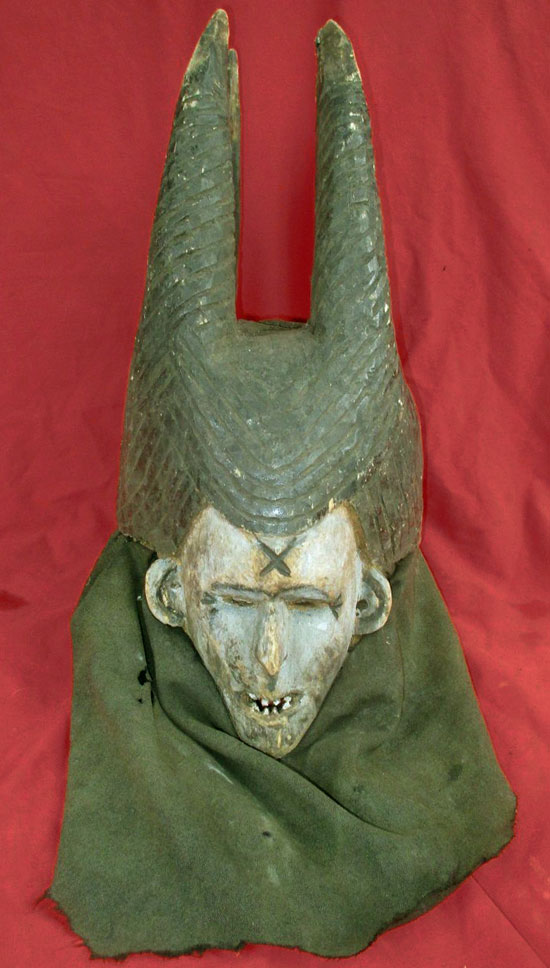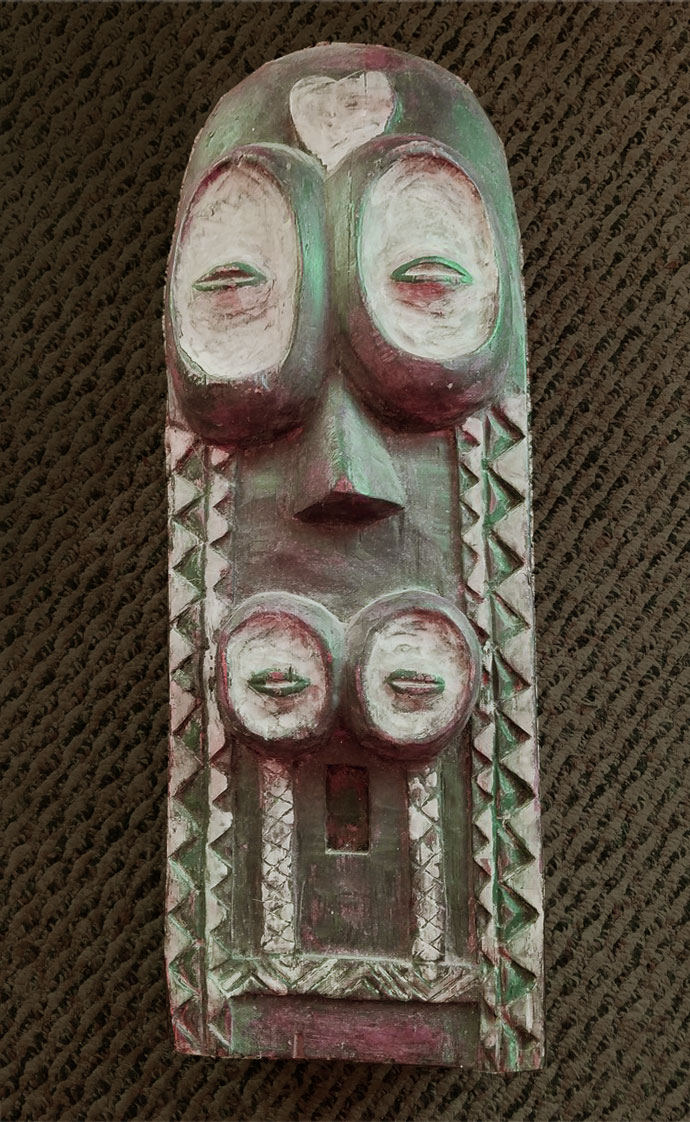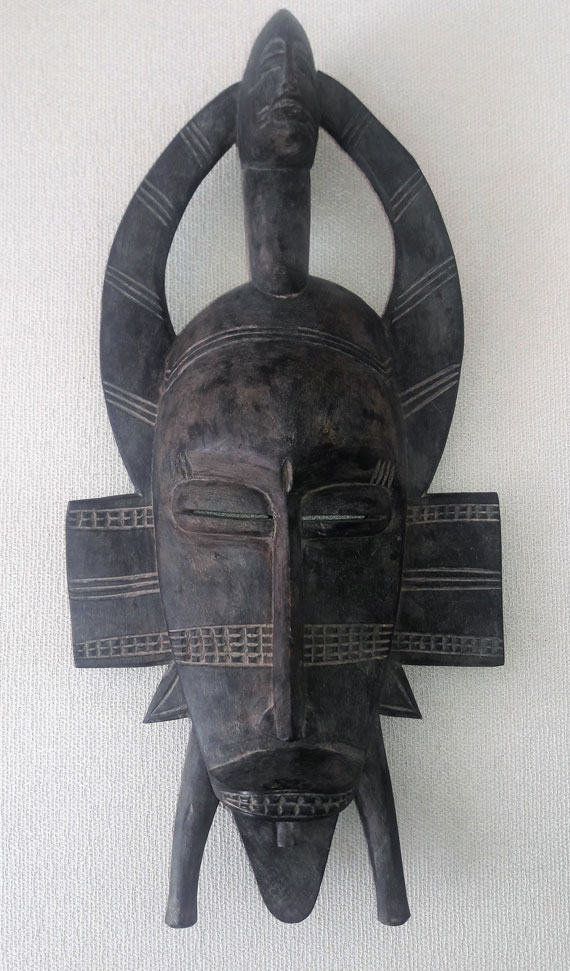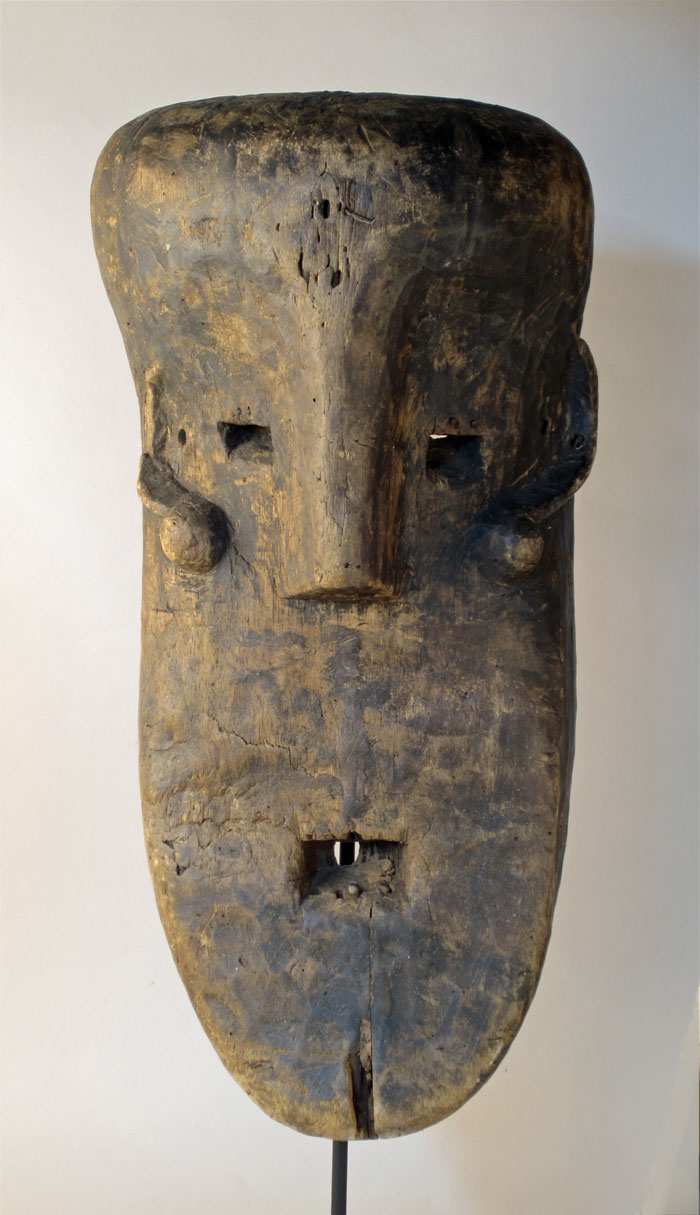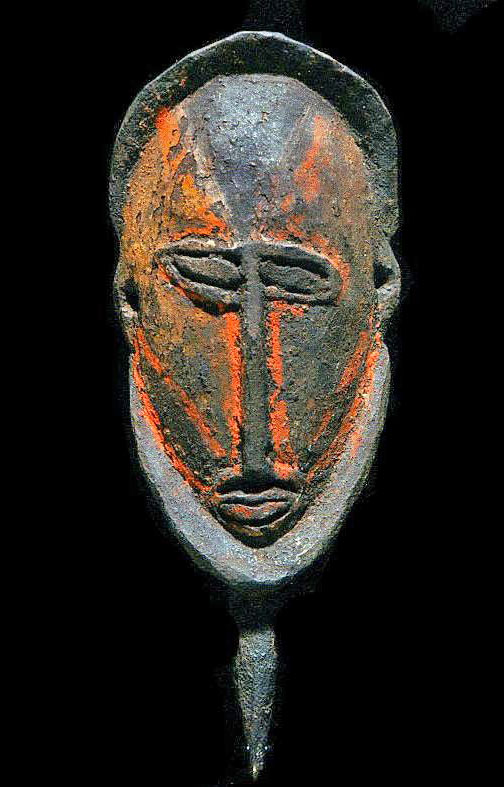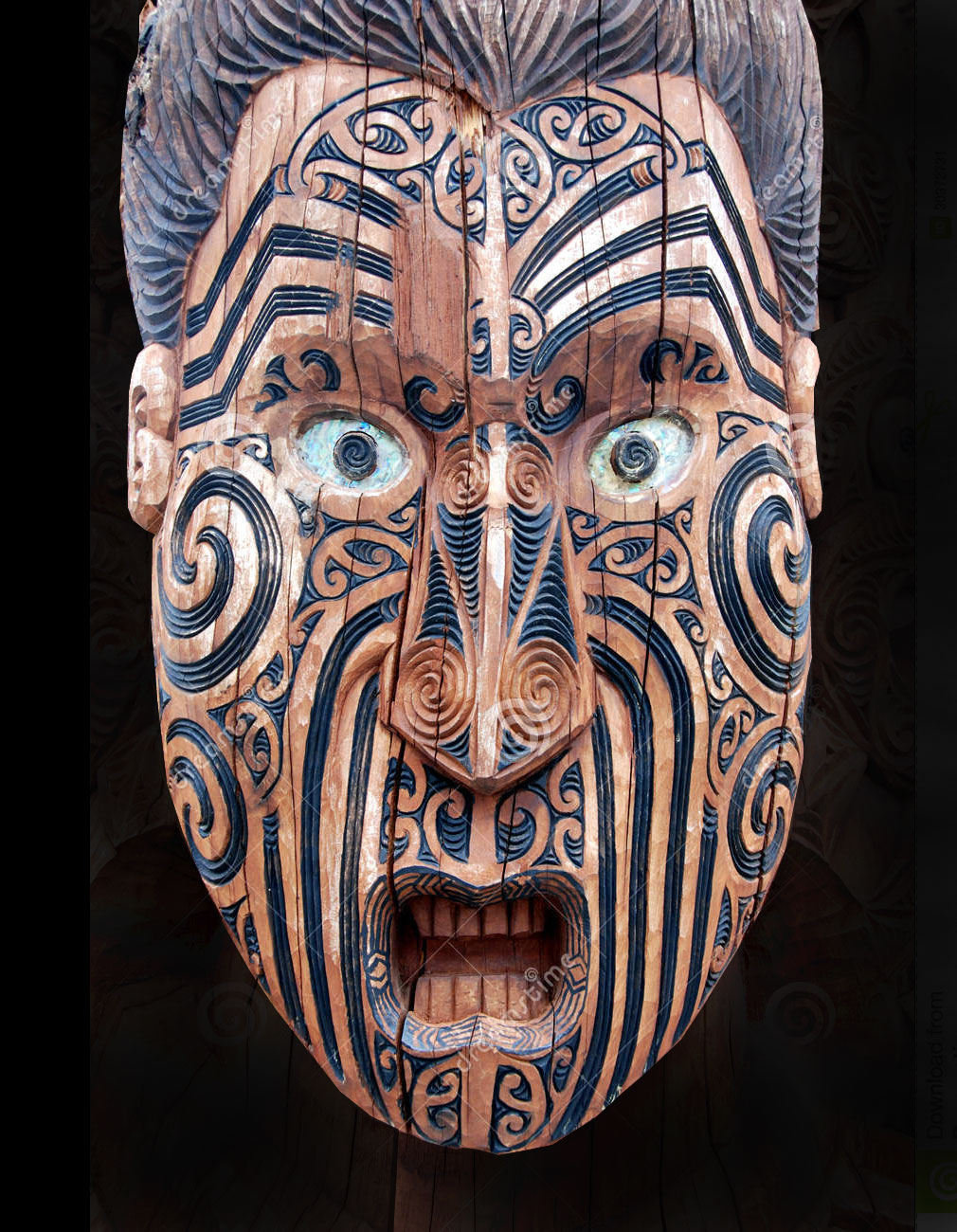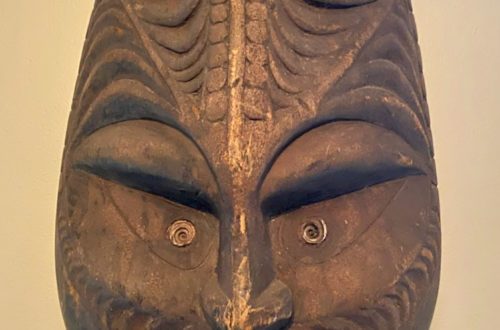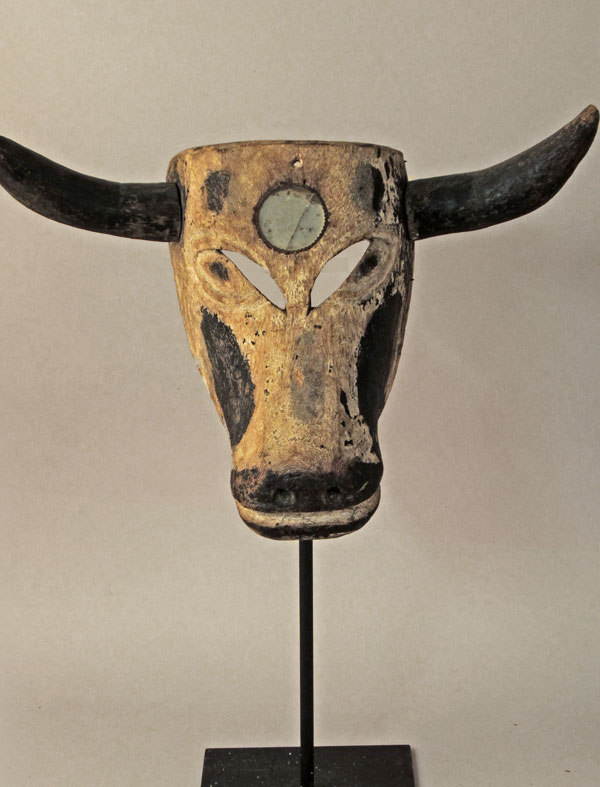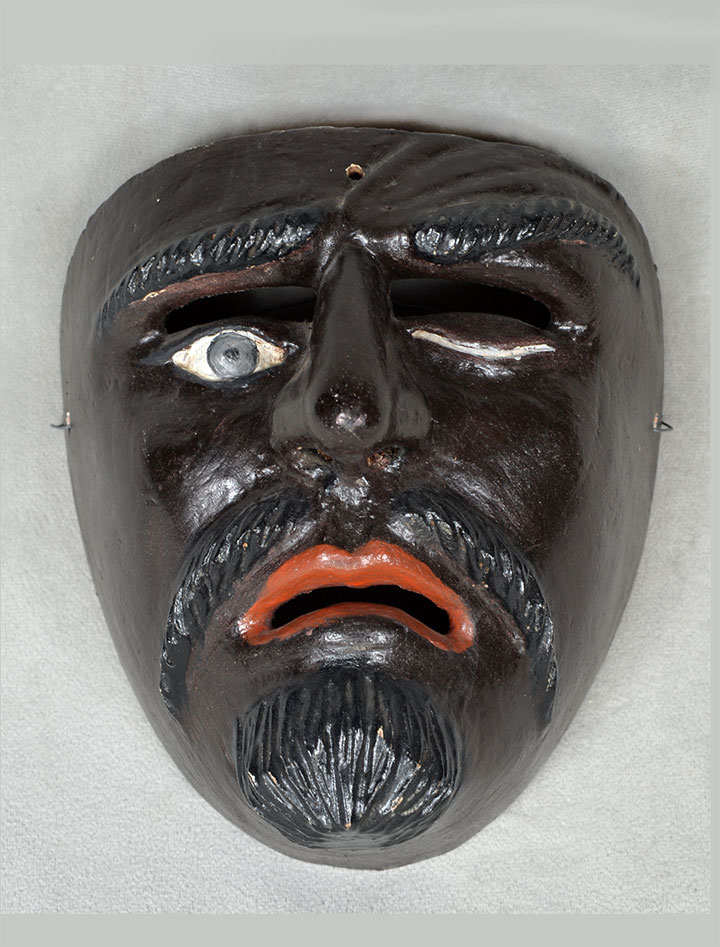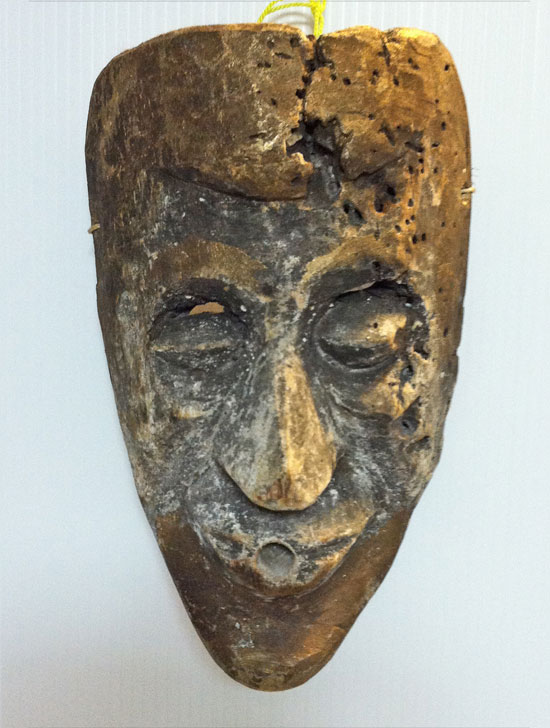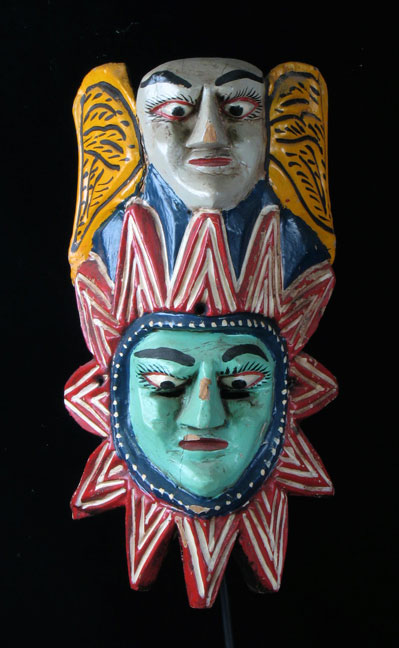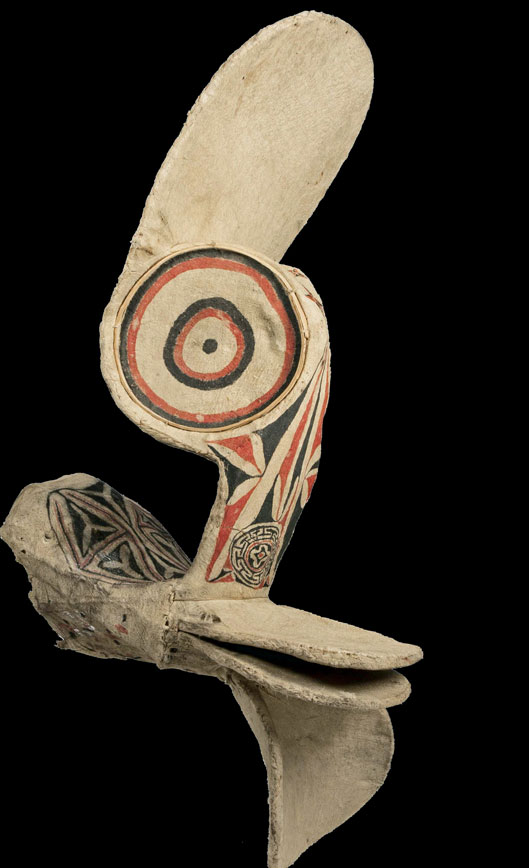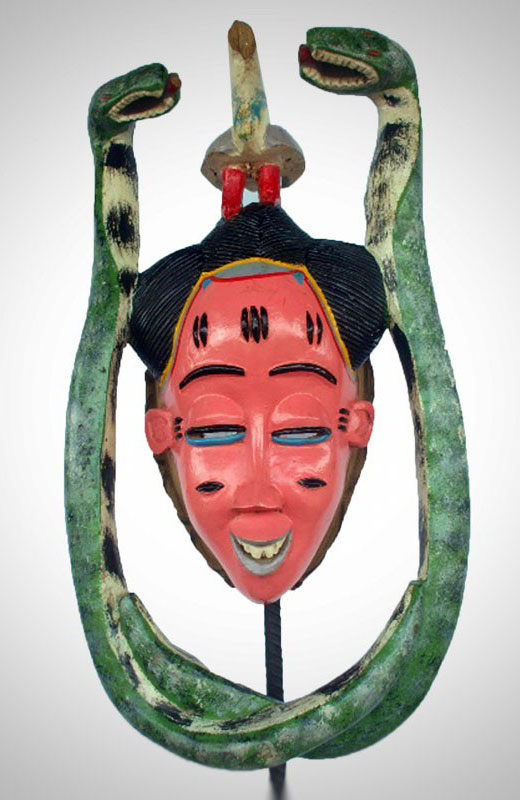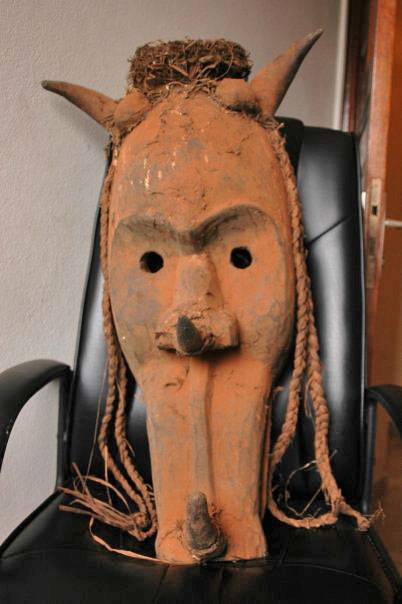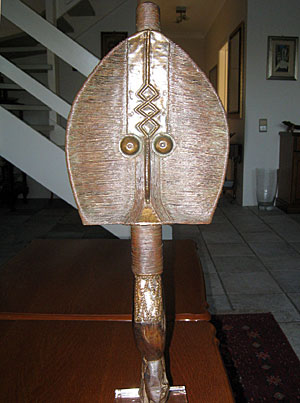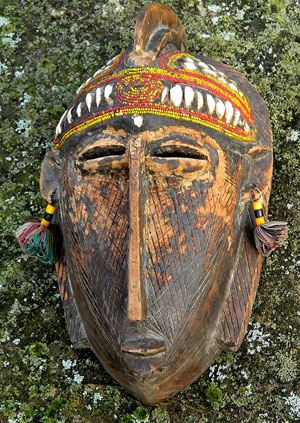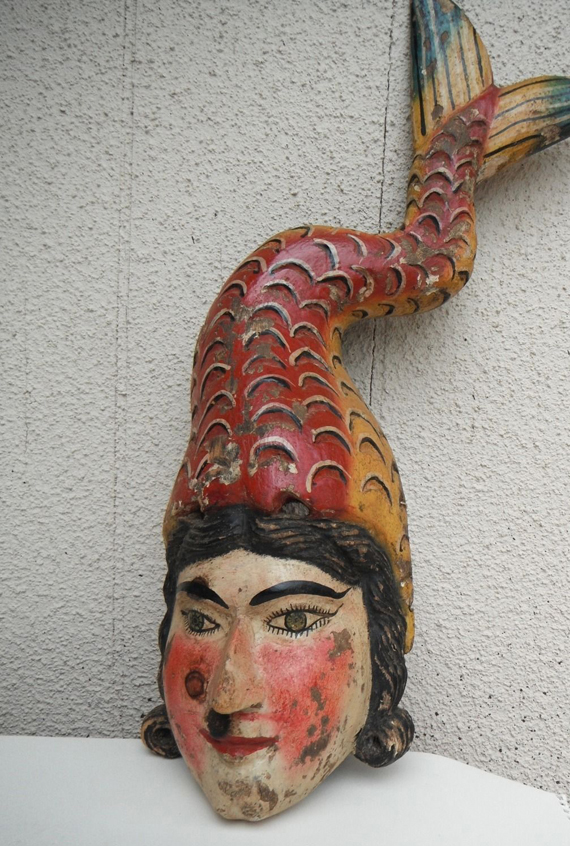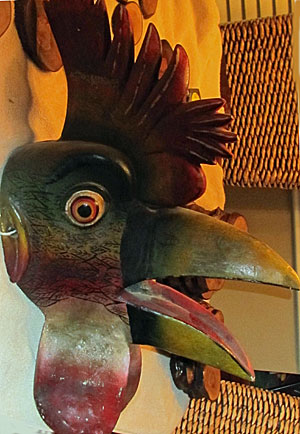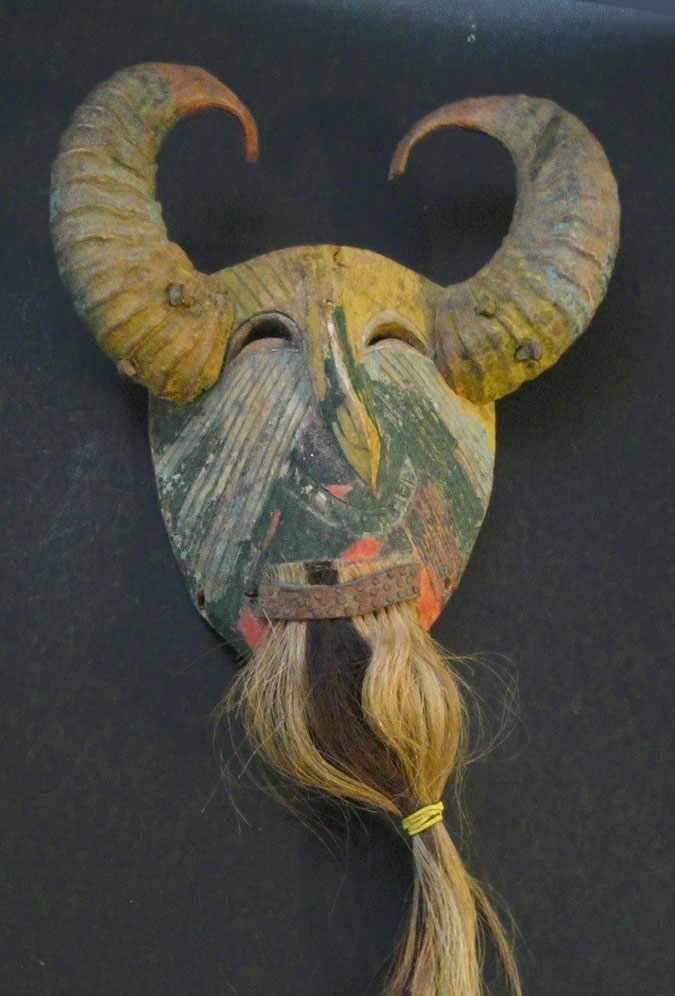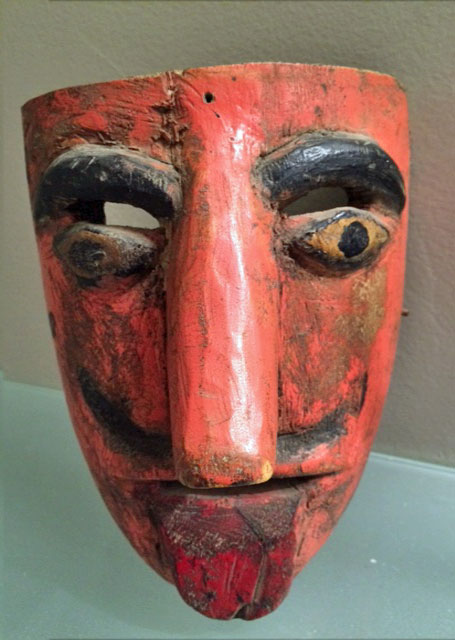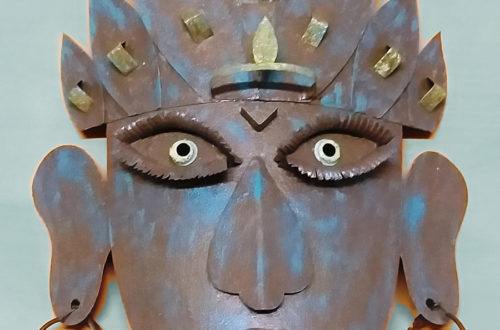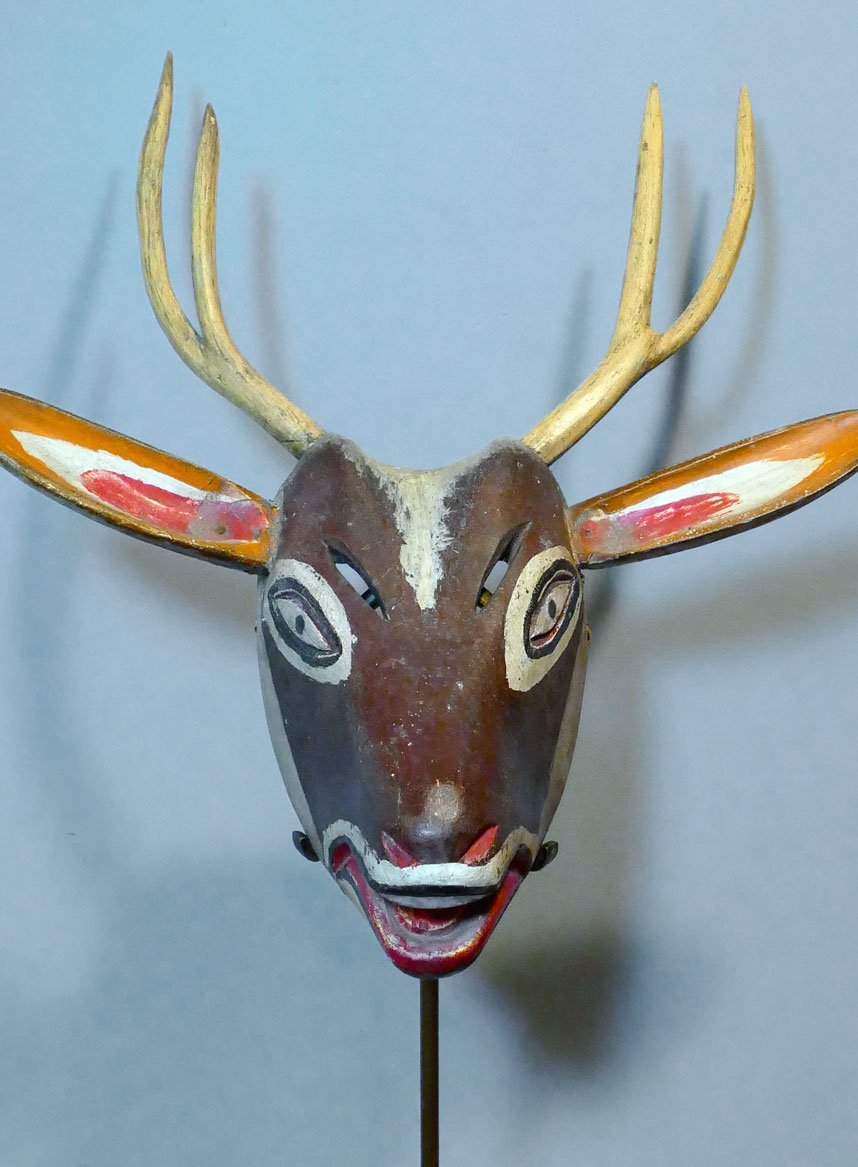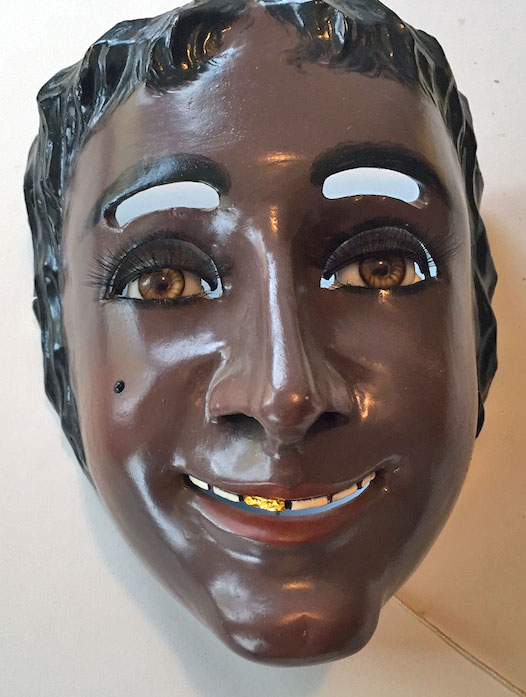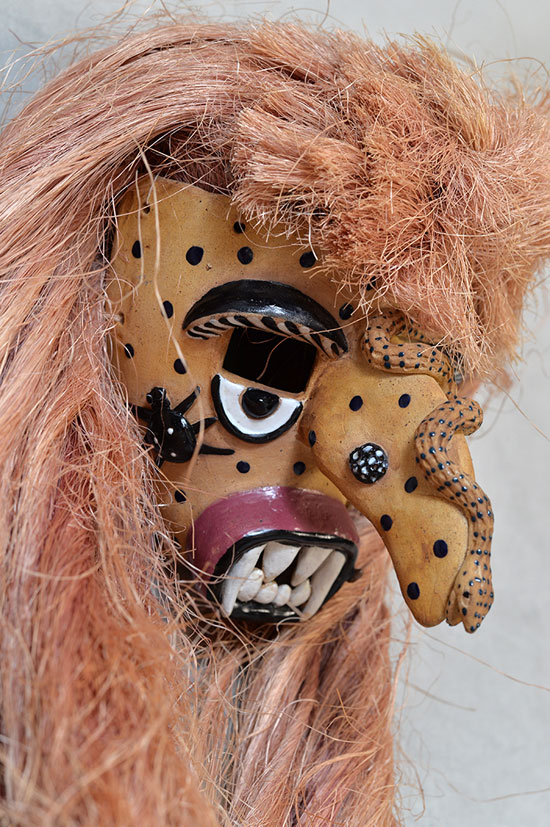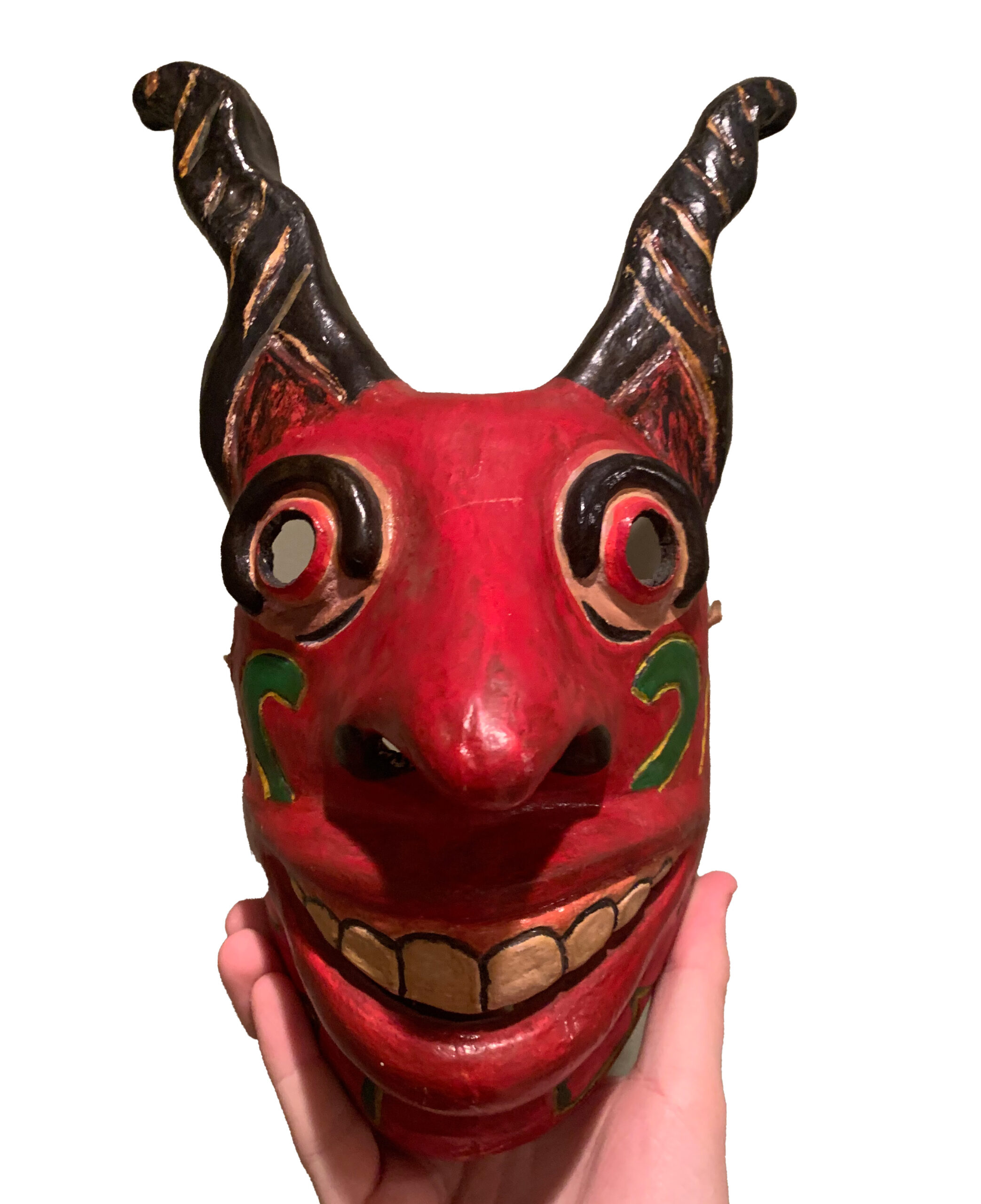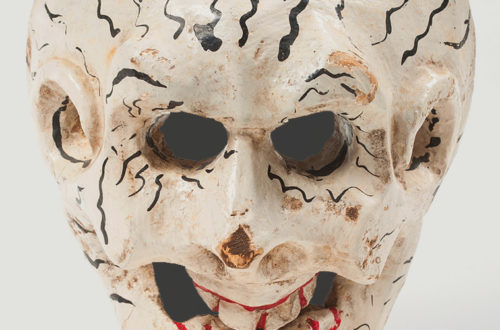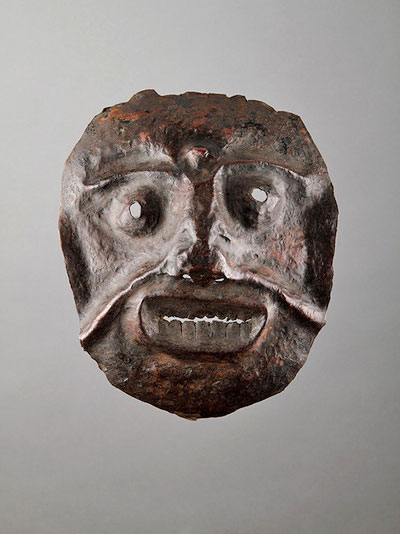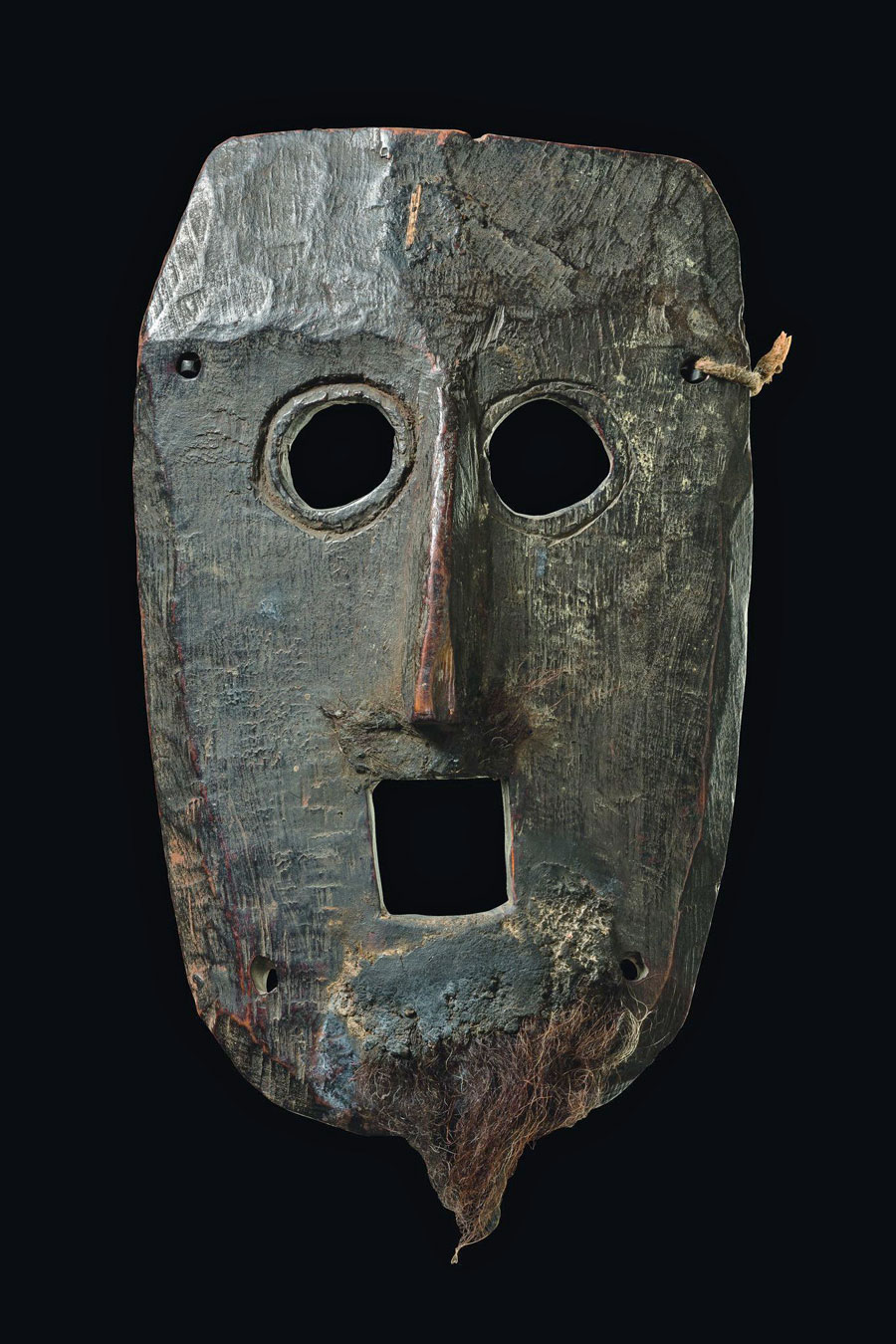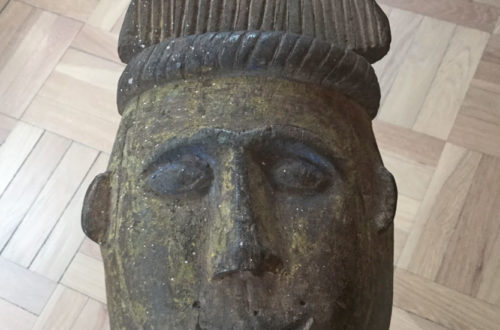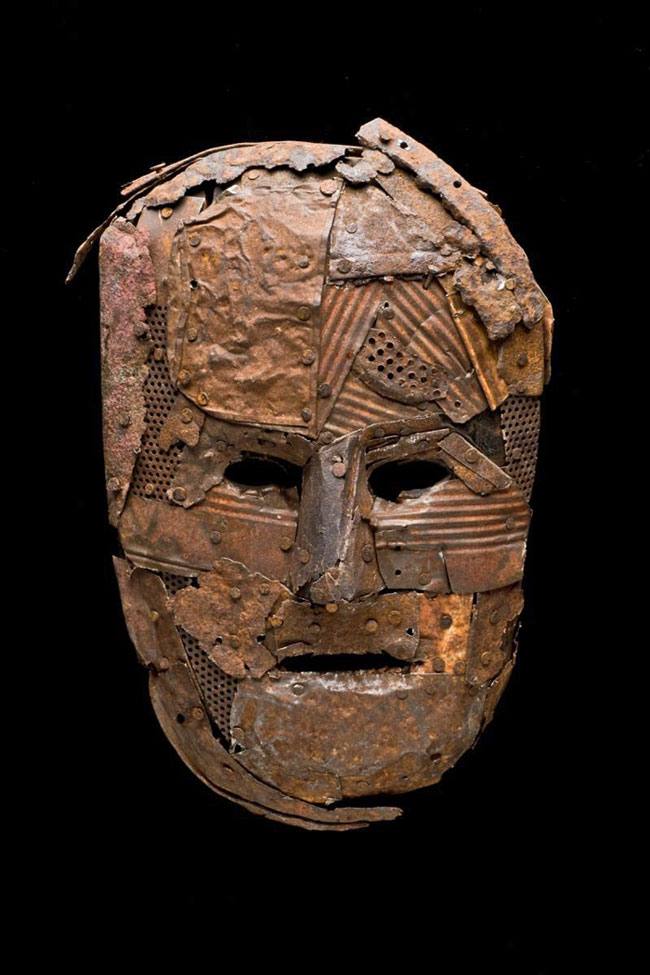Q: Hi Bob! I was looking at this mask on the net and the seller says it appears ritually used. Do you think it’s as claimed from viewing it? J., 959 A: Here is what the copy says… This is an outstanding ethnographic spiritual relic imported from the Igbo tribe of Nigeria. It’s an otherworldly old ritual mask made from carved wood. It features 4 horn-like protrusions from the top of the head and a rather startling facial expression. An old cloth hangs down the back of the neck to completely conceal the identity of the wearer. This is an older, used relic with signs of ritual wear as you can see in…
-
-
PNG Yam Mask
This old mask is from the Abelam people who live in the East Sepik province of Papua New Guinea. They are a farming society in which giant yams are an especially important food source. The masks are used to decorate harvested yams. Carvings like this (collected more than 40 years ago) were not made with steel tools and are often more beautiful than the more modern versions. You can see this and many other authentic Abelam and Wosera yam masks from the Dick Jemison Collection at Galerie Mourlot in New York City during Tribal Art Week, May 4-8. Thank you, David Cassera, for reminding us of this important show.
-
Old Bull Mask from Mexico
A fine old example of the Bull (Torito) mask that is an important character at Carnival in Alto Lucero, Veracruz. This mask was well used when it was bought in the 1960s. See page 34 of Masks of Mexico by Mauldin for a similar mask that is not as old. This one is pictured in Masks of the World by Ibold and Yohn on page 124. It is what serious collectors love– frequent usage, old age, beautiful traditional design, and still in good shape. Note the mirror in middle of forehead. In a few days we will have an auction of Mexican masks on this website. Because of current economic…
-
The fabulous Baining mask
This is a famous mask that comes from one of the islands in the New Britain chain of the Pacific Ocean. It is quite large (almost as big at the tribesman who’s wearing it) and is made of tapa cloth stretched over a light wood frame. The large masks are spectacular folk art worn at night around a bonfire built by the Uramot Baining people who live in the mountainous interior of the Gazelle Peninsula, and used during performances of the snake dance. Very dramatic, and different from anything else you can see in the world of masquerade. I hope you enjoy it.
-
Colorful Zaouli mask
Today I was sent this along with some photos of very colorful masks from Ivory Coast, West Africa. Here is the message… “I came across these videos of Zaouli dance from the Guro tribe, Ivory coast. https://www.youtube.com/watch?v=BbLzhlR8GJc https://www.youtube.com/watch?v=87SLHb2cDpY&nohtml5=False I showed these to my grandson – now age 6 – and he said “How do they do that?” Richard, 954 Zaouli is thought to exemplify a “new tradition” in African ritual and ceremonial dance that apparently arose after the end of colonialism and is recognized as such. It is also associated with brightly painted masks that often incorporate snakes linked to the Mami Wata religion of West Africa that was transported…
-
Mexican Mermaid Mask
Q: Can you estimate age, where it came from in Mexico and who might have carved it? What is your take on the condition, paint loss, looks like woods knots over the eye and next to the nose and something under the nose? Bill, 953 A: It came from the state of Guerrero. I think we started seeing this style of decorative (tourist mask) as early as 1970. The tourist trade was beginning to grow and these kinds of items were offered to rich gringos as valuable antiques. This decorative industry grew and grew, often producing beautiful carvings that can be a joy to collect. By the 90’s…
-
Old Oaxacan mask
Q: Know this is a Mexican mask, but would like your thoughts on its original purpose. It is very light weight wood, has remains of gold paint and was inhabited by insects!!! Despite its condition, I really love this mask and would like your opinions on it. I bought it along with an “unusual Mexican bird masks” hat I sent you pictures of 6/11/15. Mickey, 952 A: Here is what it says on an old label pasted on the rear of the mask. This Google translation doesn’t make sense to me. Tepozitlan, District Juguila, (close to the Pacific coast of Oaxaca, Mexico) Cargador: con tres mas carga la mesa on…
-
Gypsy mask from Tlaxcala
Q: Called a Gitano, this mask is from Tlaxcala, Mexico. It is in excellent condition with mechanical eyelids and a bright blue interior. I had never seen anything like it, but my brother did some research on the Internet and found a few others which are similar — but not in color. Joan, 951 A: These high-quality masks made by professional carvers in the state of Tlaxcala usually depict the Catrines (Dandies) who perform the famous rain dance at Carnival time. Note that Joan’s example has beautiful glass eyes plus moving eyelids with false eyelashes. But of course, there are other dances requiring masks for other characters. This one is…
-
Yakut iron mask
Q: This mask was labelled as a Shaman’s mask from the Yakut people of Siberia. Do you have similar masks in your collection? Jeff, 950 A: I’ve never seen one in my 35 years of collecting. Now, after doing some research, I still know very little about them. The Yakut are living in Northern Siberia, just west of the Asiatic Eskimos. In the southern parts of their small country they raise horses and cattle. In addition, they produce there own iron ore and are excellent blacksmiths. Thus the iron mask. I’m posting another iron mask that is maybe from somewhere else. I’ve seen a number of iron masks from Mali…
-
Art mask
In Sausalito, CA, there is a mask collector-turned-sculpture by the name of Mort Golub. Though his work is wearable, these masks are made to be collected and displayed. You can read about him and see more of his work at www.mortgolubart.com Here is a quote from his website… “My particular interests became centered in the masking traditions of the Himalayas. In the early 1990s I began collecting masks from this area, when great masterpieces were still available. Living with such pieces was very revealing, and led me from painting to making sculpture. Many of the ancient broken and discarded objects that I had been collecting as well became incorporated into…
